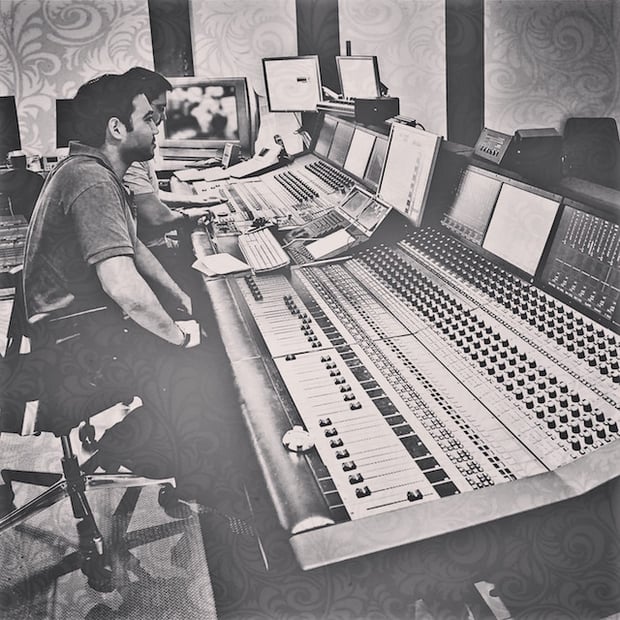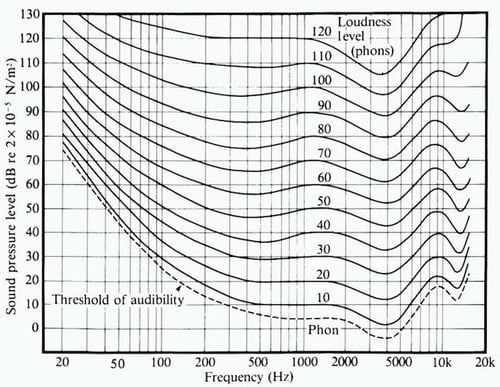 Image via Wikimedia Commons
Image via Wikimedia Commons
If you're on a tight budget and can't afford a mixer, or you're just looking to further develop your skills as a competitive, 21st-century musician, it's difficult to know where to begin. Mixing is an art form that requires attention to detail, resolute patience, and technical knowledge that usually only comes with time and experience. Luckily, we've got you covered with this starter list of go-to areas in your mixes to tackle so your songs can sparkle. Follow these steps to figure out what's hindering clarity and holding back your music from shining.
1. Balance relative levels
Before you reach for the parametric multi-band EQ knobs and start adding sub-frequency plugins under your bass tracks, try checking the volume levels of each track in relation to one another. Keep it simple and make gradual adjustments of only a few dBs at a time.
Start by breaking your tracks down into sections by instrument groups, sonic frequencies, and relative importance (i.e., where the kick and snare should be in relation to the lead and backup vocals). It's amazing how you can make instruments cut through a mix just by playing around with volume. Try starting from the bottom up (i.e., balancing lowest frequencies first), layering higher instrument groups as you go. Try to wait as long as possible to include any volume automation, as it's difficult to go back and adjust levels once faders are moving themselves.
[4 Reasons All Musicians Should Know Basic Recording and Mixing Techniques]
2. Don't neglect panning
Think of your mix on a four-dimensional grid: top down frequency spectrums; left to right panning plateau; front to back depth and reverb space; and up and down relative volume. Treat each one of these linear spaces individually, starting with volume levels and moving next to the panning plane. You can experiment with listening to your songs in a minus b (A-B) monitoring to see what's stacked up in the center of your mixes and if anything's competing for clarity.
If you're monitoring in stereo, by listening to one channel out of phase with the other, you cancel the phantom center and reveal elements of your songs that may need panning adjustments. You can easily accomplish A-B monitoring while working in Pro Tools by utilizing the Trim plugin to flip the phase. Try not to stack too many elements directly in the center, and remember that whatever you pan hard left and right will stick out in the mix, especially when listening with headphones.
3. Clean up your drum tracks
If you're working with acoustic drums, you'll want to clean each track up as much as possible before moving on. This includes trimming down blank spots where no rhythms are played, filtering or gating unnecessary frequencies (like extremely low and high hertz on the kick), and ensuring you have headroom to work with. Don't expect the kick and snare to stand alone and speak through the entire mix without added samples and still be competitive in today's sonic marketplace.
In the beginning, you have to decide what you want to drive your mix: the kick or the bass. This decision will help you gauge where to place lower frequencies around the sound you want to propel your song forward.
4. Listen back at different volumes and on multiple monitors
 Image via gearslutz.com
Image via gearslutz.com
Ever heard of the Fletcher Munson Curve? It's unquestionably important to understand while you're mixing. The Fletcher Munson Curves basically outline our brain's perceived loudness in graphical form based on frequency spectrums. As you increase the overall loudness of your mix, certain frequencies will stick out (lows and highs), while other mid-range tones will seem softer.
This is why it's important to frequently listen to your mixes at varying levels to get a clearer picture of the tonal balance of all your songs. If you turn up your volume and the mix starts to sound harsh, you'll want to tweak the upper frequencies. Conversely, if you listen to your mix at a low volume, you'll want to hear the important elements that you want in the forefront to be heard over other tones.
Changing your speakers and listening sources is key to get the best estimate of what your mix sounds like. Uncolored studio monitors are great, but try and listen to how your mix sounds through Apple earbuds, computer speakers, and car audio systems. This way, you'll be able to make accurate determinations on what's truly translating across devices to make your product more commercially accessible.
[Control Room Acoustics: How to Test Your Speakers and Listening Space]
5. Give your ears a break
It's important to take frequent breaks throughout the mixing process for multiple reasons. First, it's good to preserve your hearing. Because most people listen to music at relatively loud volumes, it's important to occasionally hear your mix at a decently loud volume. However, you don't want to be doing this for an extended period of time, and if you ever hear ringing in your ears, it's a sure sign your ears need a break.
Next, you need time away from your mix to gain perspective. Your brain naturally adapts to stimuli, and you'll quickly get accustomed to hearing certain sounds and focusing on microscopic details within your mix over time. After a few hours of detailed work, give yourself a rest. You'll be surprised how you hear your mixes the next day after a long night of editing.
Finally, it's helpful to have multiple ears in the room to catch details you might miss. If you’re a singer or drummer, you might favor these sounds and tones over others, and your ear may naturally have a bias that prevents you from getting a clear picture of your overall sonic balances.
6. Always use references
Utilize mixes within the genre you're pursuing that have been successful and sound great no matter what they're played on. Keep a track or two on hand at all times to compare your own work to as you go. Hone in on big-picture details like the amount of high-end shimmer, where the vocals are in relation to harmonies, and how instruments are panned to keep the center focused.
We hope these tips help guide you towards making better mixes that showcase the stories you want to share with the world. Let us know what muddy-mix quick fixes have helped you, and if there's anything we missed! Check out our collaborative playlist of some of the best mixed and engineered songs below, and feel free to add your own.
Caleb Hsu is an independent vocal producer and freelance recording engineer based in Los Angeles. As a classically trained pianist and composer, he enjoys writing music technology features that combine his psychology background with current industry trends.







